Total Hip Replacement B/L Cost in Malaysia from top hospitals starts from MYR 141300 (USD 30000)approx
.A Southeast Asian country, Malaysia is known for its beaches, rainforests and a mix of cultural influences. Its capital, Kuala Lumpur has colonial buildings, busy shopping districts and skyscrapers, a good example is the 451m-tall Petronas Twin Towers. In addition to its tourism potential and being well connected, it is economical to holiday in Malaysia.
This makes it a double benefit to visit Malaysia for someone seeking to get any medical procedure done. Hip Replacement in Malaysia can be combined with a much sought after break from your mundane life. Add to that the best of hospitals, clinics, orthopaedic surgeons and the most advanced medical technologies available. Some good hospitals in Malaysia for Hip replacement are KPJ Damansara Specialist Hospital, Private Hospital, Petaling Jaya, Malaysia Mahkota Medical Centre, Private Hospital, Melaka, Malaysia Gleneagles Intan Medical Centre, Private Hospital, Kuala Lumpur, Malaysia Sunway Medical Centre, Private Hospital, Petaling Jaya, Malaysia Gleneagles Medical Centre Penang, Private Hospital, Penang, Malaysia KPJ Tawakkal Specialist Hospital, Private Hospital, Kuala Lumpur, Malaysia KPJ Ampang Puteri Specialist Hospital, Private Hospital, Ampang, Malaysia Penang Adventist Hospital, Non profit Hospital, Penang, Malaysia
Hip Replacement Cost in Malaysia breakdown: Hip Replacement (THR) - $US 4,600 to $US 6,500 Hip Replacement - Minimally Invasive - $US 7,700 to $US 8,500 Hip Replacement - Partial - $US 5,100 to $US 7,100 Hip Replacement - Revision - $US 10,000 to $US 15,000 Hip Replacement in Malaysia costs much less than what it costs to get Hip Replacement done in Germany (US$ 21000 to US$ 28000).
| Country | Cost | Local_currency |
|---|---|---|
| Czechia | USD 8190 | Czechia 185831 |
| Greece | USD 12180 | Greece 11206 |
| Hungary | USD 14000 | Hungary 4879840 |
| India | USD 6280 | India 522182 |
| Israel | USD 41000 | Israel 155800 |
| Lithuania | USD 10520 | Lithuania 9678 |
| Malaysia | USD 30000 | Malaysia 141300 |
| Morocco | USD 30000 | Morocco 301200 |
| Poland | USD 9390 | Poland 37936 |
| South Korea | USD 37000 | South Korea 49679530 |
| Spain | USD 30210 | Spain 27793 |
| Switzerland | USD 32000 | Switzerland 27520 |
| Thailand | USD 19090 | Thailand 680558 |
| Tunisia | USD 21000 | Tunisia 65310 |
| Turkey | USD 16778 | Turkey 505689 |
| United Arab Emirates | USD 30040 | United Arab Emirates 110247 |
| United Kingdom | USD 13360 | United Kingdom 10554 |
Treatment cost

MediGence is offering immense facilities for your medical journey such as:
We provide packages at economical prices with a number of additional benefits which make it a better opportunity than spending actual hospital costs with singular benefits. Bilateral Total Hip Replacement Surgery is an orthopaedic surgery performed to replace a diseased or injured knee on both sides with artificial material. The Prosthesis can restore both the knees where the cartilage has worn away., The Bilateral Total Knee Replacement surgery is quite similar to the Unilateral replacement surgery. However, it might need two surgical teams to perform the surgery on both sides., We are offering the finest Total Hip Replacement Surgery B/L comprehensive and discounted packages, inclusive of all benefits at Sarvodaya Hospital and Research Centre, India.

MediGence is offering immense facilities for your medical journey such as:
We provide packages at economical prices with a number of additional benefits which make it a better opportunity than spending actual hospital costs with singular benefits. Bilateral Total Hip Replacement Surgery is an orthopaedic surgery performed to replace diseased or injured knee of both the sides with an artificial material. The Prosthesis can restore both the knees where the cartilage has worn away., The Bilateral Total Knee Replacement surgery is quite similar to the Unilateral replacement surgery. However, it might need two surgical teams to perform the surgery on both sides., We are offering the finest Total Hip Replacement Surgery B/L comprehensive and discounted packages, inclusive of all benefits at Medicana Camlica Hospital, Turkey.
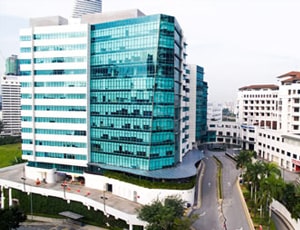
Parkway Pantai located in Kuala Lumpur, Malaysia is accredited by JCI. Also listed below are some of the most prominent infrastructural details:

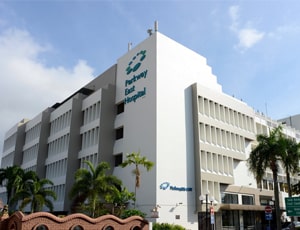
Parkway East Hospital located in Joo Chiat Pl, Singapore is accredited by JCI. Also listed below are some of the most prominent infrastructural details:
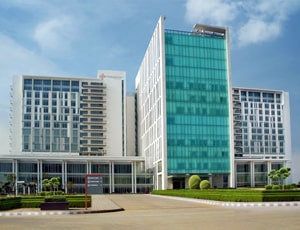
Types of Total Hip Replacement B/L in Medanta - The Medicity and its associated cost
| Treatment Option | Approximate Cost Range (USD) | Approximate Cost Range (INR) |
|---|---|---|
| B/L Total Hip Replacement | 9168 - 13328 | 728062 - 1108182 |
| Cemented Hip Replacement | 9075 - 11325 | 743894 - 926047 |
| Uncemented Hip Replacement | 10251 - 12350 | 820453 - 1006081 |
| Hybrid Hip Replacement | 9446 - 11820 | 776422 - 973082 |
| Minimally Invasive Hip Replacement | 11444 - 13619 | 915733 - 1095361 |
| Robotic-Assisted Hip Replacement | 12622 - 14336 | 1007863 - 1212347 |
| Revision Hip Replacement | 13624 - 16893 | 1084580 - 1384207 |
DOCTORS IN 14 SPECIALITIES
FACILITIES & AMENITIES
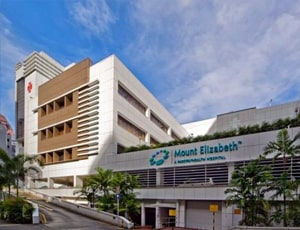
Mount Elizabeth Hospital located in Singapore, Singapore is accredited by JCI. Also listed below are some of the most prominent infrastructural details:
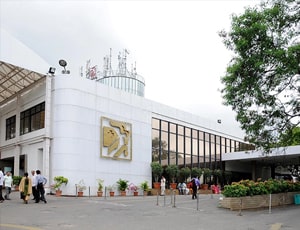
Types of Total Hip Replacement B/L in Apollo Hospitals and its associated cost
| Treatment Option | Approximate Cost Range (USD) | Approximate Cost Range (INR) |
|---|---|---|
| B/L Total Hip Replacement | 8874 - 13392 | 745416 - 1128092 |
| Cemented Hip Replacement | 8835 - 11008 | 728417 - 911380 |
| Uncemented Hip Replacement | 10232 - 12595 | 815214 - 1021419 |
| Hybrid Hip Replacement | 9391 - 11994 | 792896 - 975225 |
| Minimally Invasive Hip Replacement | 11164 - 13269 | 925665 - 1120713 |
| Robotic-Assisted Hip Replacement | 12406 - 14870 | 1028142 - 1184871 |
| Revision Hip Replacement | 13451 - 16963 | 1090750 - 1359147 |
DOCTORS IN 14 SPECIALITIES
FACILITIES & AMENITIES
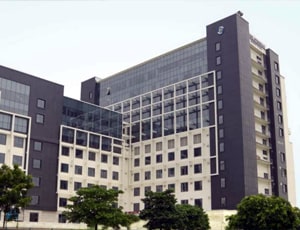
Types of Total Hip Replacement B/L in Venkateshwar Hospital and its associated cost
| Treatment Option | Approximate Cost Range (USD) | Approximate Cost Range (INR) |
|---|---|---|
| B/L Total Hip Replacement | 8084 - 12186 | 668822 - 997629 |
| Cemented Hip Replacement | 8118 - 10130 | 666136 - 831960 |
| Uncemented Hip Replacement | 9149 - 11137 | 752509 - 913613 |
| Hybrid Hip Replacement | 8596 - 10701 | 707915 - 877577 |
| Minimally Invasive Hip Replacement | 10118 - 12202 | 830517 - 995504 |
| Robotic-Assisted Hip Replacement | 11121 - 13142 | 913784 - 1084861 |
| Revision Hip Replacement | 12142 - 15254 | 1000216 - 1250030 |
DOCTORS IN 13 SPECIALITIES
FACILITIES & AMENITIES
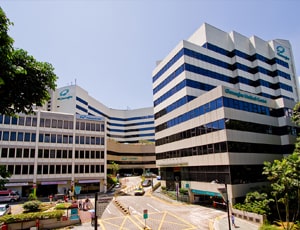
Gleneagles Hospital located in Napier Road, Singapore is accredited by JCI. Also listed below are some of the most prominent infrastructural details:
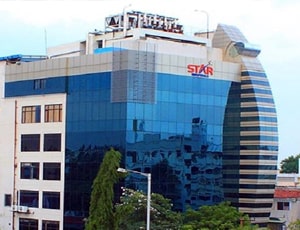
Types of Total Hip Replacement B/L in Star Hospitals and its associated cost
| Treatment Option | Approximate Cost Range (USD) | Approximate Cost Range (INR) |
|---|---|---|
| B/L Total Hip Replacement | 7518 - 11099 | 612027 - 930614 |
| Cemented Hip Replacement | 7435 - 9219 | 619409 - 757927 |
| Uncemented Hip Replacement | 8342 - 10260 | 687453 - 843849 |
| Hybrid Hip Replacement | 7996 - 9668 | 656804 - 798627 |
| Minimally Invasive Hip Replacement | 9252 - 11185 | 761095 - 923073 |
| Robotic-Assisted Hip Replacement | 10273 - 12240 | 839229 - 1010147 |
| Revision Hip Replacement | 11305 - 13922 | 932944 - 1161151 |
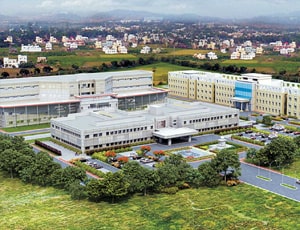
Types of Total Hip Replacement B/L in Global Health City and its associated cost
| Treatment Option | Approximate Cost Range (USD) | Approximate Cost Range (INR) |
|---|---|---|
| B/L Total Hip Replacement | 9016 - 13671 | 734492 - 1128642 |
| Cemented Hip Replacement | 9059 - 11344 | 726797 - 903548 |
| Uncemented Hip Replacement | 9921 - 12467 | 817990 - 1000598 |
| Hybrid Hip Replacement | 9397 - 11777 | 794559 - 962162 |
| Minimally Invasive Hip Replacement | 11184 - 13246 | 919239 - 1086026 |
| Robotic-Assisted Hip Replacement | 12202 - 14894 | 1018066 - 1194653 |
| Revision Hip Replacement | 13289 - 17171 | 1125209 - 1365177 |
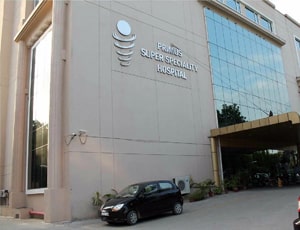
Types of Total Hip Replacement B/L in Primus Super Speciality Hospital and its associated cost
| Treatment Option | Approximate Cost Range (USD) | Approximate Cost Range (INR) |
|---|---|---|
| B/L Total Hip Replacement | 8155 - 12186 | 667207 - 1002438 |
| Cemented Hip Replacement | 8158 - 10125 | 668987 - 830561 |
| Uncemented Hip Replacement | 9159 - 11145 | 746263 - 918418 |
| Hybrid Hip Replacement | 8589 - 10674 | 707364 - 877415 |
| Minimally Invasive Hip Replacement | 10130 - 12181 | 830151 - 995683 |
| Robotic-Assisted Hip Replacement | 11180 - 13152 | 913392 - 1081402 |
| Revision Hip Replacement | 12170 - 15216 | 999799 - 1245985 |
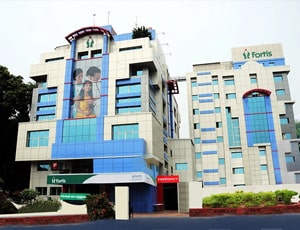
Types of Total Hip Replacement B/L in Fortis Malar Hospital and its associated cost
| Treatment Option | Approximate Cost Range (USD) | Approximate Cost Range (INR) |
|---|---|---|
| B/L Total Hip Replacement | 8142 - 12162 | 665213 - 1001182 |
| Cemented Hip Replacement | 8105 - 10175 | 667042 - 835057 |
| Uncemented Hip Replacement | 9103 - 11190 | 752708 - 916842 |
| Hybrid Hip Replacement | 8631 - 10662 | 706813 - 875898 |
| Minimally Invasive Hip Replacement | 10124 - 12188 | 836307 - 1000534 |
| Robotic-Assisted Hip Replacement | 11185 - 13133 | 912654 - 1080543 |
| Revision Hip Replacement | 12214 - 15252 | 997398 - 1242538 |
DOCTORS IN 9 SPECIALITIES
FACILITIES & AMENITIES
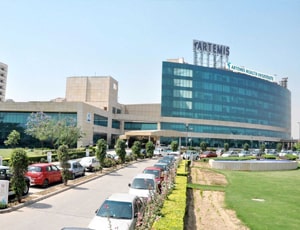
Types of Total Hip Replacement B/L in Artemis Health Institute and its associated cost
| Treatment Option | Approximate Cost Range (USD) | Approximate Cost Range (INR) |
|---|---|---|
| B/L Total Hip Replacement | 9090 - 13270 | 731081 - 1114347 |
| Cemented Hip Replacement | 8854 - 11211 | 725284 - 942383 |
| Uncemented Hip Replacement | 10131 - 12349 | 843879 - 1024839 |
| Hybrid Hip Replacement | 9421 - 11714 | 767365 - 974940 |
| Minimally Invasive Hip Replacement | 11026 - 13494 | 939783 - 1129495 |
| Robotic-Assisted Hip Replacement | 12104 - 14498 | 1037121 - 1208468 |
| Revision Hip Replacement | 13314 - 16811 | 1089557 - 1357108 |
DOCTORS IN 15 SPECIALITIES
FACILITIES & AMENITIES

Types of Total Hip Replacement B/L in Sterling Wockhardt Hospital and its associated cost
| Treatment Option | Approximate Cost Range (USD) | Approximate Cost Range (INR) |
|---|---|---|
| B/L Total Hip Replacement | 8130 - 12138 | 665994 - 994712 |
| Cemented Hip Replacement | 8110 - 10104 | 666592 - 829597 |
| Uncemented Hip Replacement | 9168 - 11115 | 746326 - 911978 |
| Hybrid Hip Replacement | 8644 - 10622 | 705177 - 877327 |
| Minimally Invasive Hip Replacement | 10108 - 12204 | 833593 - 999303 |
| Robotic-Assisted Hip Replacement | 11124 - 13247 | 916664 - 1083836 |
| Revision Hip Replacement | 12238 - 15275 | 994868 - 1250354 |

Types of Total Hip Replacement B/L in Medicana International Istanbul and its associated cost
| Treatment Option | Approximate Cost Range (USD) | Approximate Cost Range (TRY) |
|---|---|---|
| B/L Total Hip Replacement | 13228 - 20343 | 411016 - 618023 |
| Cemented Hip Replacement | 10272 - 15491 | 311380 - 467566 |
| Uncemented Hip Replacement | 12609 - 18257 | 379965 - 551316 |
| Hybrid Hip Replacement | 11168 - 17119 | 337007 - 503263 |
| Minimally Invasive Hip Replacement | 13610 - 20362 | 414710 - 599380 |
| Robotic-Assisted Hip Replacement | 15934 - 22279 | 474511 - 669653 |
| Revision Hip Replacement | 18139 - 24256 | 549556 - 757332 |
DOCTORS IN 10 SPECIALITIES
FACILITIES & AMENITIES

Types of Total Hip Replacement B/L in Memorial Antalya Hospital and its associated cost
| Treatment Option | Approximate Cost Range (USD) | Approximate Cost Range (TRY) |
|---|---|---|
| B/L Total Hip Replacement | 13555 - 19991 | 415143 - 610454 |
| Cemented Hip Replacement | 10088 - 15851 | 311267 - 476728 |
| Uncemented Hip Replacement | 12466 - 18355 | 378986 - 543641 |
| Hybrid Hip Replacement | 11258 - 16680 | 341288 - 504388 |
| Minimally Invasive Hip Replacement | 13699 - 20163 | 411876 - 618053 |
| Robotic-Assisted Hip Replacement | 15420 - 22355 | 484546 - 685650 |
| Revision Hip Replacement | 18239 - 24342 | 532028 - 757843 |
DOCTORS IN 11 SPECIALITIES
FACILITIES & AMENITIES
Total hip replacement surgery also called total hip arthroplasty, is a surgical procedure conducted to replace the damaged or diseased hip joint with an artificial joint or prosthesis. The hip prosthesis contains the following three components:
The two types of prostheses used in total hip replacement surgery include a.) cemented and b.) uncemented prostheses. A combination of both is sometimes used during the surgery, depending on the recommendation made by the patient.
Hip joint surgery is conducted in patients when other non-surgical and surgical alternatives fail to work and relieve the patient of terrible hip pain. A successful hip joint surgery ensures increased mobility, improved function of the hip joint, and pain-free movement.
Two types of total hip replacement surgery differ based on whether a single or both hip joints are replaced. Total hip replacement bilateral refers to the replacement of joints on both sides of the hips. This procedure is conducted when both sides are affected.
The surgeon may decide to operate both sides of the hips in a single surgery or they may schedule two different surgeries with a gap in between them. The surgical approach that the hip replacement surgeon chooses before the procedure depends on the patient's condition and the surgical team's experience. Two approaches can be used to conduct the procedure – minimally invasive and open surgery.
Minimally invasive hip replacement is a relatively new procedure that allows for minimal healing and recovery time and small incisions. Open surgery, on the other hand, involves the creation of a single large incision that increases recovery and healing time. Each of these approaches has its pros and cons.
Before the surgery, the hip replacement surgeon will give you general anesthesia or a sedative. You would receive an intravenous line in the arm or hand. The surgical area is cleaned with an antiseptic solution and an incision is made in the hip area.
The surgeon then removes the damaged part of the hip joint and replaces the joint with an artificial joint or prosthesis. The incision is closed with stitches or surgical staples and a drain is placed to remove fluid. The incision site is secured with a sterile bandage dressing.
During the procedure, the surgeon removes a part of the thigh bone including the head of the bone, and replaces it with the prosthesis. The surface of the acetabulum is first roughened so that the new socket implant can attach to it well. Usually, a majority of artificial joint components are fixed using acrylic cement. However, cementless fixation has gained a huge popularity in the last few years.
The hip replacement implants may have plastic, metallic, or ceramic components. Metal-on-plastic implants are the most commonly used for hip replacement. Ceramic-on-plastic and ceramic-on-ceramic are used in younger and more active patients. Metal-on-metal is rarely used in younger patients.
Ask your healthcare adviser for the best multiple options and choose the one that meets your expectations
The average cost of Total Hip Replacement B/L in Malaysia starts from USD 30000 MSQH are just some of the accreditations which top hospitals in Malaysia hold where a Total Hip Replacement B/L is conducted.
Total Hip Replacement B/L package cost in Malaysia has different inclusions and exclusions. The top hospitals for Total Hip Replacement B/L in Malaysia covers all the expenses related to the pre-surgery investigations of the candidate. The Total Hip Replacement B/L procedure in Malaysia includes the fees of the surgeon, hospitalization and anesthesia as well. Stay outside the package duration, post-operative complications and diagnosis of a new condition may further increase the Total Hip Replacement B/L cost in Malaysia.
Total Hip Replacement B/L in Malaysia is offered by multiple hospitals across the country. The top hospitals for Total Hip Replacement B/L in Malaysia include the following:
After Total Hip Replacement B/L in Malaysia, the patient is supposed to stay in guest house for another 28 days. This period is important to conduct all the follow-up tests to ensure that the surgery was successful and the patient can go back to the home country.
Apart from the Total Hip Replacement B/L cost, there are a few other daily charges that the patient may have to pay. These are the charges for daily meals and accommodation outside the hospital. The extra charges may start from USD 50 per person.
Some of the cpopular cities in Malaysia that offer Total Hip Replacement B/L include the following:
The average duration of stay at the hospital after Total Hip Replacement B/L is about 7 days for proper care and monitoring. The patient is subjected to several biochemistry and radiological scans to see that everything is okay and the recovery is on track. After making sure that patient is clinically stable, discharge is planned.
There are more than 1 hospitals that offer Total Hip Replacement B/L in Malaysia. These clinics have propoer infrastructure as well as offer good quality of services when it comes to Total Hip Replacement B/L Such hospitals follow all legal protocols and guidelines as specified by the local medical affairs body when it comes to the treatment of international patients.
Some of the best medical specialists for Total Hip Replacement B/L in Malaysia are:
Malaysia’s high success rate of hip replacement is because of a number of factors like compatibility of the donor, choice of hospital, the expertise of the surgical and post-operative care teams, and many more. The current success rate is nearly 95%. With advanced technology and start-of-art surgical techniques, the expected survival of hip replacement has increased up to a great extent.
The preparation for hip replacement surgery begins 1-2 weeks before the surgery. The surgeon will do pre-operative planning. They will collect all the important information to determine whether you are suitable for hip replacement surgery. A preoperative evaluation starts with thorough physical examination and laboratory tests. The report of the evaluation will reveal your risk profile and help the surgeon know issues that may arise while the surgery. It may also help reduce the risks of premature implant failure. The surgeon will evaluate your complete medical history and perform a thorough examination for the safety of the patient. Diagnostic and imaging tests include MRI scan, X-ray, CT scan, Electrocardiography, Urinalysis, and CBC. The costs of evaluation & diagnostic tests associated with hip replacement in Malaysia are 1500 and 2500 USD respectively.
Below factors affect the cost of hip replacement surgery in Malaysia:
Some of the best surgeons in Malaysia for Hip Replacement are:
Several medical facilities and hospitals offer effective hip replacement surgery in Malaysia with excellent clinical outcomes. Malaysia is a leading destination for medical tourism. The growing healthcare industry and the lower cost of treatments brings a large number of international patients to get their medical procedure. The best hip replacement hospitals in Malaysia are of high international standard and have highly accredited medical centers with first-rate clinical services. You can expect reliable and best treatment as well as personalized care at these world-class hospitals. It is a beautiful nation and is a perfect destination for healing and recreation.
Some of the best hospitals in Malaysia for Hip Replacement are: